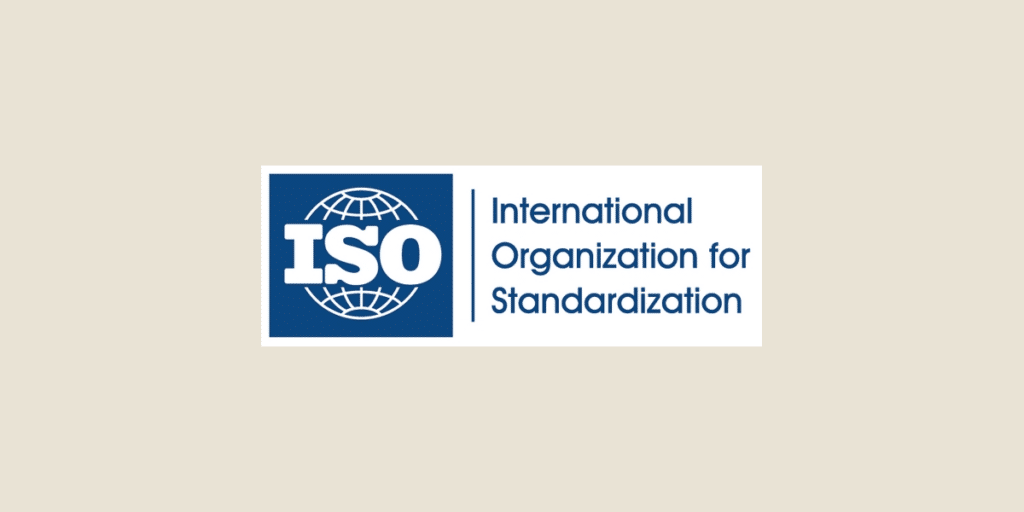ISO standards are international standards developed by the International Organization for Standardization, which define specifications for products, services, and systems. Their role? To ensure quality and safety on a global scale, including in the field of computing!
What would a world without standards look like? Electrical outlets would change shape at every border, security protocols would vary from one factory to another, and the quality of a product would be as vague as it is subjective… To avoid such chaos, there is a system often unknown to the general public but omnipresent in our daily lives: the ISO standards.
Like Esperanto for communication, these standards constitute a universal language for the industrial and commercial world. From the most common screw to the most complex algorithm, they weave an invisible web that connects the four corners of the globe. This allows us to use what is produced in China even in Europe or the United States, or to manufacture in Brazil what is designed in Germany. Far beyond simple technical standardization, however, ISO standards evolve at the pace of societal and environmental challenges. Thus, at a time when cybersecurity becomes a major concern, ISO is also developing standards to protect our digital data!
The history of ISO
In the aftermath of World War II, in 1946, as the world sought to rebuild and establish new foundations for international cooperation, a group of delegates from 25 countries met in London.
Their ambition? To create an organization that would facilitate the coordination and unification of industrial standards on a global scale. This is how the International Organization for Standardization was born… better known by its acronym ISO!

The choice of this name is no coincidence. Derived from the Greek “isos,” meaning “equal,” it perfectly reflects the vision of equity and universality carried by the organization. Identical in all languages, this name embodies the desire to create a common language transcending linguistic and cultural barriers. The organization’s first years were dedicated to establishing fundamental standards in fields such as mechanics, electricity, and materials.
These technical standards played a crucial role in the reconstruction and post-war industrialization, facilitating trade and the transfer of technology between nations. Over the following decades, ISO evolved to respond to changes in our world. In the 1970s, as globalization accelerated, it broadened its scope to include management standards.
This is the case for ISO 9000, introduced in 1987, which marked a turning point by establishing international criteria for quality management systems. Subsequent decades in the 1990s and 2000s saw the emergence of environmental and social concerns. Here too, ISO responded with the ISO 14000 series for environmental management, followed later by standards on social responsibility and occupational health and safety.
Facing the dawn of the digital era, it developed standards such as ISO 26000 for information security. It is this ability to anticipate and respond to the emerging needs of society and industry that has enabled the organization to remain relevant! Today, ISO has more than 160 member countries and has published over 24,000 international standards. Its influence touches almost every aspect of our daily lives, from food safety to cybersecurity to innovation…
The ISO standard development process
The development of an ISO standard follows a complex and collaborative process, akin to a symphony of global expertise. This rigorous approach ensures that each standard reflects a true international consensus and meets the actual needs of the market.
It all begins with the identification of a need: emerging technology, societal challenge, industry demand… the first step is to recognize the necessity of a standard. Once identified, a technical committee composed of experts in the concerned area is formed. These specialists, from different countries and sectors, work together to draft the standard proposal.
This phase can take several months, or even years for the most complex topics. The draft is then submitted for a vote and a public comment period. At this stage, the broader international community can contribute, ensuring that the standard takes into account a diversity of perspectives.
After this consultation phase, the technical committee revises the project based on the feedback received. If a consensus is reached and the project is approved by at least 75% of the ISO’s voting members, it becomes an official international standard. Although sometimes seeming too lengthy, this process ensures that the standards are the result of a true international consensus balancing the interests of all stakeholders and ensuring their relevance and applicability on a global scale!

What are the different types of ISO standards?
A wide range of fields is covered by ISO standards, but they can be categorized into several main types. Here they are. Management standards provide frameworks for improving organizational performance. The most well-known example is ISO 9001 for quality management.
However, other important standards fall within this category. Such as ISO 14001 for environmental management, or ISO 45001 for occupational health and safety. On the other hand, technical standards define specifications for products. They ensure their compatibility, quality, and safety. This can include elements as diverse as credit card formats, shipping container sizes, and even the properties of construction materials.
With the increasing importance of the service sector in the global economy, specific standards have been developed to improve their quality and consistency. For example, ISO 20000 for IT Service Management. And in the digital age, where data protection has become crucial, a flagship standard in this area is ISO 27001 which provides a framework for information security management.
There are also industry-specific standards for particular industries, such as ISO 22000 for food safety or ISO 13485 for medical devices. Likewise, horizontal standards address issues across several sectors. An excellent example is ISO 26000 on social responsibility.
The promises and pitfalls of standardization
Adopting ISO standards offers numerous advantages for companies, providing a proven framework for improving quality, efficiency, and safety. They also facilitate access to new markets by demonstrating compliance with internationally recognized standards. And for consumers, these standards ensure the safety and quality of products and services. It’s also a common language for international trade, facilitating exchanges and reducing technical barriers.
However, the implementation of these standards is not without challenges. The costs associated with certification and compliance can be significant, especially for small businesses. Moreover, the complexity of some standards may require considerable resources and expertise to be fully understood and applied…

Conclusion
As we move towards a future that is increasingly complex and interconnected, ISO standards are called upon to evolve to play an ever more important role. The rapid evolution of technologies, the urgency of environmental challenges, and the constant transformation of business practices create a fertile ground for the development and ongoing adaptation of these standards. In this context, the demand for implementation experts will only grow. These professionals will play a key role in translating global standards into concrete and effective practices within organizations.
To learn how to implement ISO 27001, you can choose DataScientest. Our remote training course lasting only 5 days will enable you to master all the information security standards! You will gain all the essential skills for information security management, and to maintain robust security practices in compliance with various international standards.
The program includes the fundamental principles of the ISO 27001 standard, risk analysis, as well as preparation, implementation, control, and improvement of the ISMS! At the end of the course, you will receive the “Piloting the implementation of an information security management system (ISO/IEC 27001 Lead Implementer)” certification issued by SKILLS4ALL and recognized by the state.
This training is eligible for CPF financing, and its price includes OpenAI licenses. This will give you free access to the most advanced versions of tools like ChatGPT or DALL-E. Discover DataScientest now!
Now you know everything about ISO standards. For more information on the same topic, discover our complete article on ISO 27001, and our article on the link between AI and cybersecurity…










